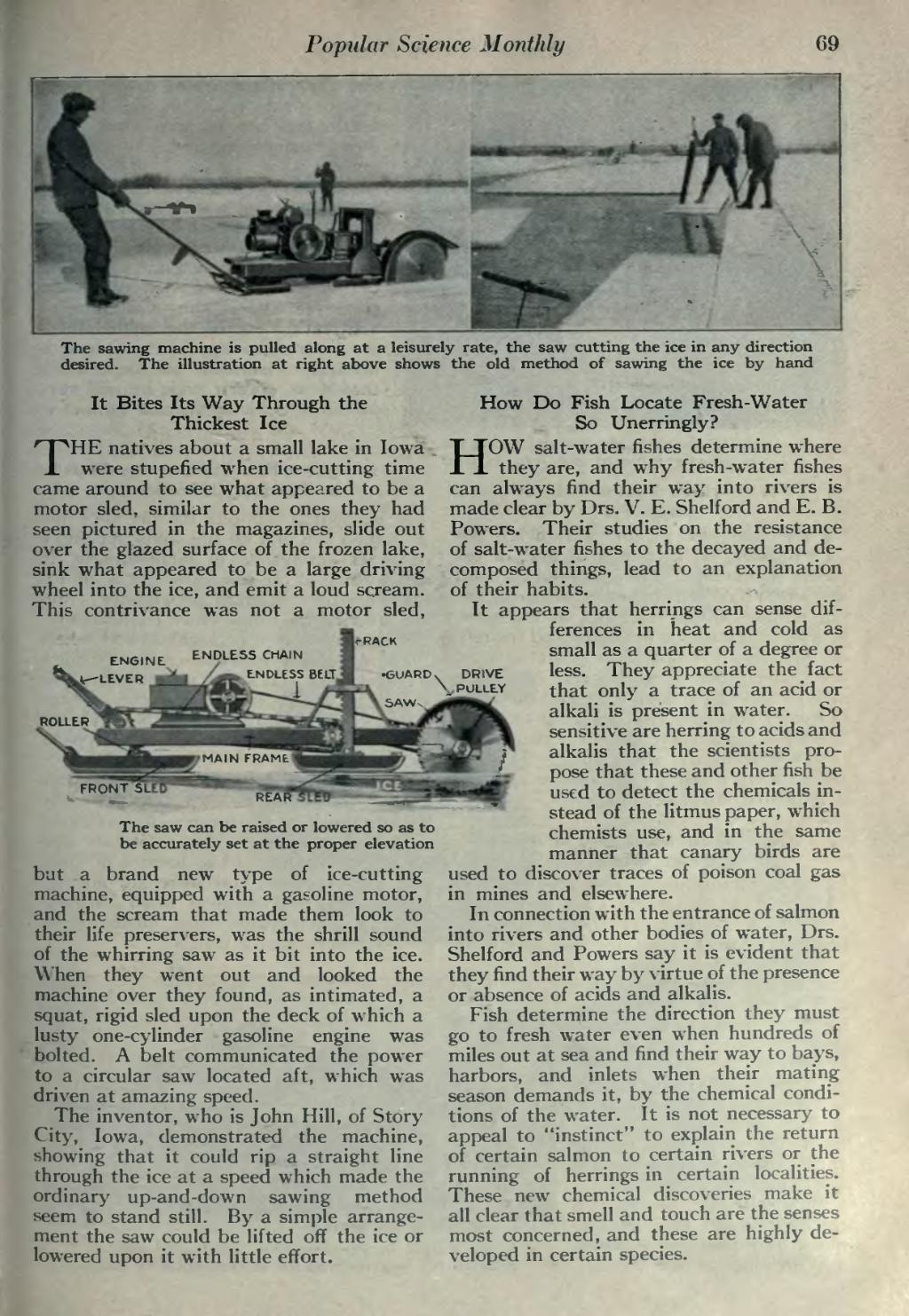Popular Science Monthly
��69
���The sawing machine is pulled along at a leisurely rate, the saw cutting the ice in any direction desired. The illustration at right above shows the old method of sawing the ice by hand
��It Bites Its Way Through the Thickest Ice
THE natives about a small lake in Iowa were stupefied when ice-cutting time came around to see what appeared to be a motor sled, similar to the ones they had seen pictured in the magazines, slide out over the glazed surface of the frozen lake, sink what appeared to be a large driving wheel into the ice, and emit a loud scream. This contrivance was not a motor sled,
��H
��RACK
��ENDLESS CHAIN
��DRIVE PULLEY
���FRONT SLr
��The saw can be raised or lowered so as to be accurately set at the proper elevation
but a brand new type of ice-cutting machine, equipped with a gasoline motor, and the scream that made them look to their life preservers, was the shrill sound of the whirring saw as it bit into the ice. When they went out and looked the machine over they found, as intimated, a squat, rigid sled upon the deck of which a lusty one-cylinder gasoline engine was bolted. A belt communicated the power to a circular saw located aft, which was driven at amazing speed.
The inventor, who is John Hill, of Story City, Iowa, demonstrated the machine, showing that it could rip a straight line through the ice at a speed which made the ordinary up-and-down sawing method seem to stand still. By a simple arrange- ment the saw could be lifted off the ice or lowered upon it with little effort.
��How Do Fish Locate Fresh-Water So Unerringly?
OW salt-water fishes determine where they are, and why fresh-water fishes can always find their way into rivers is made clear by Drs. V. E. Shelford and E. B. Powers, Their studies on the resistance of salt-water fishes to the decayed and de- composed things, lead to an explanation of their habits.
It appears that herrings can sense dif- ferences in heat and cold as small as a quarter of a degree or less. They appreciate the fact that only a trace of an acid or alkali is present in water. So sensitive are herring to acids and alkalis that the scientists pro- pose that these and other fish be used to detect the chemicals in- stead of the litmus paper, which chemists use, and in the same manner that canary birds are used to discover traces of poison coal gas in mines and elsewhere.
In connection with the entrance of salmon into rivers and other bodies of water, Drs. Shelford and Powers say it is evident that they find their way by virtue of the presence or absence of acids and alkalis.
Fish determine the direction they must go to fresh water even when hundreds of miles out at sea and find their way to bays, harbors, and inlets when their mating season demands it, by the chemical condi- tions of the water. It is not necessary to appeal to "instinct" to explain the return of certain salmon to certain rivers or the running of herrings in certain localities. These new chemical discoveries make it all clear that smell and touch are the senses most concerned, and these are highly de- veloped in certain species.
�� �
